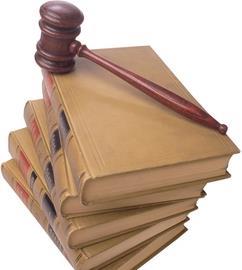…and when they do, you may have to conduct an internal investigation. It’s a balancing act between co-operating with the authorities and protecting your own interests
When misfortune such as a health and safety incident strikes, you will be amazed at the number of stakeholders beating a path to your door. Directors, regulatory inspectors, staff, the press, concerned locals, family members and the police may all get involved. Emotions can run high, accusations of negligence may be made, and everyone on site may be developing their own theory as to what has gone on.
The police and regulators will likely be on site to investigate possible criminal offences. The issue is how to balance the need to co-operate with the authorities while protecting your own interests. Your organisation does, of course, need to know what actually happened. You personally may have to write an internal investigation report. A good accident report:
- should be compiled on the instruction of lawyers so it has legal professional privilege
- should be completed by somebody who does not have a personal stake in the outcome
- should examine the immediate causes and the wider underlying factors
- should be able to refer to witness statements that have been taken as soon as possible after the incident, thus avoiding memory fade
- should be as factual as possible, avoiding unsubstantiated opinion
- should make suggestions on actions to improve – if something is obviously dangerous, early conclusions should be communicated to those affected immediately
- should identify subcontractors, equipment suppliers or other third parties involved in the incident, with contact details where relevant
- should have a defined circulation list.
Don’t be afraid to go on site and take photographs. These will be useful to assist witnesses as they discuss how events unfolded, and will also help you to explain the incident to line management.
Ensure all staff are briefed to only relate facts to the regulatory authorities, rather than opinions. Even worse is the employee who talks about “accidents waiting to happen” – ensure staff refrain from making such rash statements.
Emotions can run high, accusations of negligence may be made and everyone on site may be developing their own theory as to what has gone on
When interviewing, many investigators fall into the trap of using closed questions to try to get a witness to agree with the conclusions the investigator has already formed. This is the wrong approach. A good investigator asks open-ended questions – questions that begin with what, why, when, how, where and who.
Assess the credibility of any statements made by a witness. Consider any reasons they may have for glossing over finer detail or their relationship to events. Do not be afraid to ask penetrating questions. Once the initial site investigation and witness statements are completed, you will need to consider background information. Reporting of Injuries, Diseases and Dangerous Occurrences Regulations (RIDDOR) reports, health and safety committee minutes, company policies, inspection reports and policies will all be relevant. Better to ensure that documents are assembled while the incident is still at the forefront of people’s minds.
Eversheds handles about 100 accident investigations a year, from near misses to incidents involving multiple fatalities such as Buncefield, Potters Bar and Dreamspace. We are running courses in major cities throughout October. These will look at the powers of the investigators, practical issues when preparing an internal investigation, witness interviews, dealing with whistleblowers and making recommendations. We’ve arranged a 10% discount on the price of the course for BSj readers. For more details, contact me quoting reference PVBSJ1.
Source
Building Sustainable Design
Postscript
Paul Verrico is a regulatory solicitor at Eversheds, email: paulverrico@eversheds.com or tel 0845 498 4084






















No comments yet